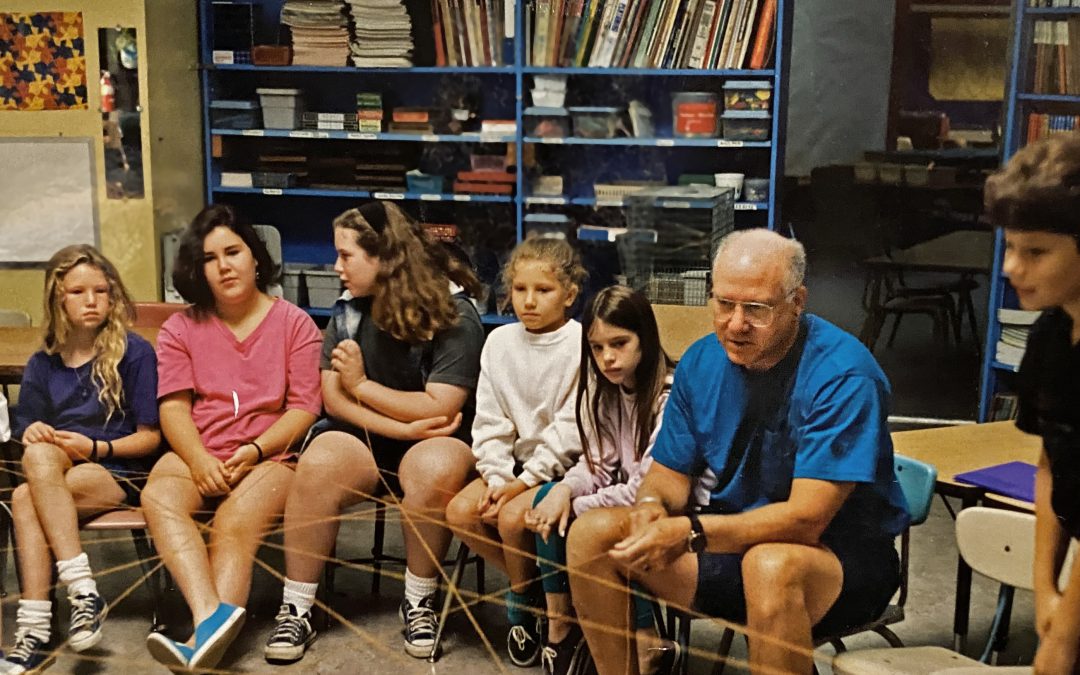The Open Classroom resuscitated my teaching career. Through years of public and private school jobs I had stalled in a profession that stifled my idealism and desire for creative freedom in the classroom. After a five year break from the classroom, a mixture of serendipity and a tip about an opening in the district from my sister, landed me in the 1985 Open Classroom 4,5,6.
With support and understanding from Judy and Sandy, though troubled by doubts, I launched myself into the day to day of making my classroom into a safe and stimulating environment. My nature and my previous experiences in progressive education gave me a foundation that the Open Classroom allowed me to run with. I wanted the feeling of a community where my job as a sort of unofficial mayor was to cater to the educational and emotional needs, personal aspirations, individual problems, social conflicts, creative dreams and group desires of this intentional community. I encouraged students to express themselves with honesty. I set out to support all efforts for self-reliance on the one hand and cooperation within the community on the other. I wanted students to question things, value their own opinions and most of all base their opinions on what they know and be willing to rethink things if evidence changes. That’s the gist of an Open classroom or any classroom that wants to help children grow into kind, democratic, hard working and fair minded citizens.
One of the hallmarks of that classroom was to practice democratic principles whenever possible. Meetings, open ended discussions, voting, actively listening, respecting the opinions of others, trying to reach consensus and accepting loss were all a part of our days.
Honoring that process was the start of the annual Haunted House in the Open Classroom. It was a student idea that mushroomed into the first one. That show established a pattern of brainstorming that relied on a democratic process. Beginning with a discussion, we listed every possible idea that was offered with no criticism. Then, after further discussion we allowed advocates to speak in favor of any ideas they championed. Then students voiced opinions about ideas that considered notions of practicality and implementation obstacles. Finally, we voted for top favorites, and narrowing the field led usually to a super majority vote close to a consensus that asked if students who were very opposed to the favorered idea could somehow live with the choice anyway. Once a theme was chosen we discussed sets and effects and sorted iourselves into groups that planned, designed and implemented their vision. I think our most controversial idea was the passenger plane that crashed into a toxic dump in 1993 (That idea would never come up today). Although a year or two before I used a veto to eliminate a “concentration camp “idea I had to ask myself “why not?” to the plane idea. The student vote for the plane idea was unanimous and we began to plan. We built the fuselage in the room and the dump with radioactive creatures in the center of the pod.
This “why not” question became an integral part of my routine reaction to students’ ideas. The “why not” attitude guided us to build a pond, a tower with a zip line (obviously no longer there), to play mud football, build a sweat lodge outside, visit a homeless shelter in San Francisco, create a 50s style diner, a pulley system in the classroom that could lift hundreds of pounds and a photographic darkroom.
Let me end this blog with a major recognition that these events and experiences would have been near impossible without the help and support of an involved and caring parent group. Next time I’ll talk more about what I consider the hallmarks of an Open Classroom. I’ll also put together some thoughts about academics, and what kind of qualities this type of classroom can help engender in students..
